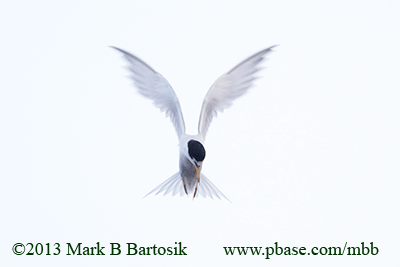
Tiffany Thio & Indra Boving
BIO 342: Animal Behavior
Mechanisms of Migration
Mechanistic questions: How does it work?
What is happening in an Arctic tern's brain when it decides to migrate? How does the Arctic tern’s body respond to environmental factors like changing wind speed and temperature? How is the Arctic tern built to survive the harsh conditions of a migration?
Let's find out!
The internal mechanisms behind an Arctic tern’s massive migration (and the migration of birds in general) are still largely unknown. It is thought that birds use the Earth’s magnetic field for navigation, and numerous studies have been done to attempt to determine how birds are able to sense the magnetic energy around them. There are two theories about the subject:
1. That cells within a bird’s brain contain small amounts of iron that serve as a magnetometer, and
2. That molecules in a bird’s eyes can sense changes in light due to the spin of electrons in a magnetic field.
Scientists have attempted to find evidence for the former by studying the location and types of cells in pigeons, using staining of BP-positive cells (iron-rich cells which could, theoretically, help with magnetoreception). The distribution of these cells throughout the bird's entire body, and variation between individuals does not provide evidence towards a magnetic sensing system in the birds subepidermis (see figure). The search for the molecular mechanisms behind bird migration continues (Treiber, Salzer, et. Al.).
We can, however, look at how an Arctic tern’s physical morphology affect its ability to fly such great distances. What mechanisms allow the bird to remain aloft for such long stretches?
The Arctic tern, like all birds, has a light skeletal frame and feathers built for flight. This is important, because an Arctic tern’s wings must carry it over 40,000 miles. The tern exhibits pointy wings, which sweep back from the front of its body and allow it to fly quickly; thus, the tern is capable not only of flying incredibly far distances, but also of covering this ground very quickly (Hatch). Their tail feathers are capable of spreading wide or contracting into a point, which helps them change speeds when flying, and they have short legs, which assist them aerodynamically. Arctic terns are typically around 40cm long, with a wingspan of 74 to 84 cm (Kaufman).





And Arctic tern physical features allow it to effortlessly fly thousands of miles.
Sources:
Hatch, Jeremy J.. (2002). Arctic Tern (Sterna paradisaea), The Birds of North America (P. G. Rodewald, Ed.). Ithaca: Cornell Lab of Ornithology; Retrieved from the Birds of North America: https://birdsna.org/Species-Account/bna/species/arcter
Kaufman, Kenn. "Arctic Tern." Audubon. Audubon Society, 2016. Web. 05 Dec. 2016.
Treiber, Christoph Daniel and Salzer, Marion Claudia and Riegler, Johannes and Edelman, Nathaniel and Sugar, Cristina and Breuss,
Martin and Pichler, Paul and Cadiou, Herve and Saunders, Martin and Lythgoe, Mark and Shaw, Jeremy and Keays, David Anthony, Clusters of iron-rich cells in the upper beak of pigeons are macrophages not magnetosensitive neurons, Nature 2012, Volume 484, 7394, 367 – 370
Images:
http://ibc.lynxeds.com/files/pictures/Arctic_Tern_cBenLascelles_3.jpg
http://media.web.britannica.com/eb-media/34/151634-004-6A01391C.jpg
http://m0.i.pbase.com/o9/20/685320/1/150766560.W23Bzdjd._MG_8699701LeastTernWindhovering.gif
http://m0.i.pbase.com/o3/20/685320/1/116716410.rs2aU97O._MG_40089ccc400.gif